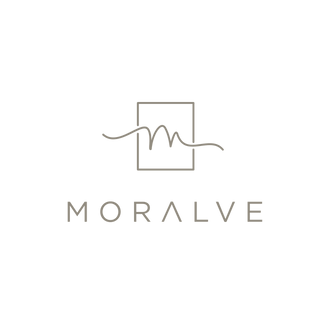8 Decluttering Clothes Tips for a Perfectly Organized Closet

An overflowing closet isn't just a storage problem; it's a source of daily stress. Sifting through unworn garments to find the perfect outfit consumes precious time and energy, turning a simple task into a frustrating chore. This guide provides actionable, expert-backed decluttering clothes tips designed to tackle the mess head-on and restore order to your wardrobe. We will move beyond generic advice to explore eight distinct, powerful methods for editing your collection to achieve ultimate closet organization.
Whether you're drawn to mindful curation like the KonMari Method or prefer the data-driven logic of the 80/20 Rule, you'll find a strategy that improves your closet organization. Preparing to reclaim your space involves not just removing items but also implementing smart organization. By the end, you'll have the tools to create a functional, streamlined closet where every item has its place, supported by efficient solutions like MORALVE hangers. This organized system will make your daily routine simpler and more enjoyable. Let's begin the journey to a beautifully organized wardrobe.
1. The KonMari Method
The KonMari Method, popularized by tidying expert Marie Kondo, is a revolutionary approach to closet organization that shifts the focus from what to discard to what to keep. Instead of simply asking, "Have I worn this in the last year?" this method encourages a more mindful and emotional connection to your belongings. The core principle is to hold each piece of clothing and ask a simple, yet powerful question: “Does this spark joy?”

This philosophy transforms decluttering from a chore into an intentional act of curating a wardrobe filled only with items you genuinely love. By focusing on joy, you create a closet space that reflects your personal style and makes you feel happy and confident every time you open its doors. It's one of the most effective decluttering clothes tips because it addresses the root cause of disorganization: holding onto items out of obligation, guilt, or apathy.
How to Implement the KonMari Method
To begin, gather every single piece of clothing you own and place it in one large pile. This visual representation of your inventory is a crucial first step for proper closet organization. Then, follow these actionable steps:
- Touch Every Item: Pick up each garment one by one. The physical connection is key to accurately assessing your emotional response.
- Ask the Core Question: As you hold the item, ask yourself if it sparks joy. If the answer is a definitive yes, it’s a keeper. If you feel hesitant or negative, it’s time to let it go.
- Express Gratitude: For items you decide to discard, take a moment to thank them for their service. This simple act provides closure and helps release any guilt associated with letting go.
- Organize by Category: Once the decluttering is complete, organize your joyful items. The KonMari method is famous for its vertical folding technique, a key to superior closet organization that allows you to see every item at a glance in your drawers.
By following this process, you will not only declutter your closet but also develop a more conscious relationship with your clothing. For a deeper dive into decluttering strategies, you can learn more about how to clear out your closet. This method is perfect for anyone seeking a profound, long-lasting transformation in their closet organization and overall mindset.
2. The 80/20 Rule (Pareto Principle)
The 80/20 Rule, also known as the Pareto Principle, offers a data-driven approach to closet organization. This principle suggests that we wear roughly 20% of our clothes 80% of the time. By applying this logic to your wardrobe, you can shift your focus from a cluttered collection to a highly efficient, organized set of favorite pieces that form the core of your daily style.
This method transforms decluttering from a guessing game into a strategic analysis of your actual wearing habits. Instead of relying solely on emotion, you use real-world evidence to determine which clothes truly serve you. This is one of the most practical decluttering clothes tips because it helps you identify and eliminate the 80% of your wardrobe that is essentially just taking up valuable closet space, making room for a more functional and streamlined collection.
How to Implement the 80/20 Rule
To start, you need to identify your core 20%. This requires a brief period of observation to gather data on what you genuinely wear day-to-day. Once you have this information, the closet organization process becomes remarkably clear and logical.
- Track Your Outfits: For the next month, make a quick note of what you wear each day. You can use a notebook, a spreadsheet, or a closet app to track your clothing.
- Identify Your Core 20%: After the tracking period, review your notes. You will quickly see a pattern emerge, revealing the small percentage of items you reach for consistently. These are your keepers.
- Evaluate the Remaining 80%: For the clothes you rarely or never wore, ask yourself why. Are they for special occasions, ill-fitting, or no longer your style? Be honest and let go of pieces that do not fit your current lifestyle.
- Organize for Efficiency: Place your core 20% in the most accessible part of your closet. The remaining occasion-specific items can be stored separately, freeing up prime real estate for your everyday essentials.
This analytical approach is perfect for anyone who prefers logic over emotion when making decisions. By focusing on the clothes you actually live in, you can build a highly practical wardrobe that simplifies getting dressed and maximizes your closet organization.
3. The Capsule Wardrobe Approach
The Capsule Wardrobe Approach is a strategic method for creating a minimalist yet highly versatile and organized closet. The core idea is to build a small collection of essential, interchangeable items in a cohesive color palette, allowing you to create a multitude of outfits from a limited number of pieces. Instead of a closet overflowing with one-off garments, you cultivate a functional wardrobe, typically containing 30-50 high-quality items that work seamlessly together.

This philosophy champions quality over quantity, transforming your daily routine from "what should I wear?" to a simple, stress-free selection process. By defining your personal style and sticking to a select group of clothes, you eliminate decision fatigue and ensure everything you own has a purpose. It’s one of the most effective decluttering clothes tips for anyone seeking long-term closet organization and a more intentional approach to fashion.
How to Implement the Capsule Wardrobe Approach
Getting started involves defining your style and color palette to build a foundation for your organized closet. Begin by decluttering items that don't fit your vision, then carefully select pieces that do. The famous "Project 333" by Courtney Carver, which challenges participants to dress with 33 items for 3 months, is a great example of this principle in action.
- Define Your Color Palette: Choose a few neutral base colors (like black, navy, or beige) and add 2-3 accent colors that complement each other and your skin tone.
- Invest in Timeless Basics: Build your capsule around high-quality staples such as a classic trench coat, well-fitting jeans, versatile tops, and neutral shoes. These will be the workhorses of your organized wardrobe.
- Build Seasonally: Create a new capsule for each season by swapping out a few weather-appropriate items. This keeps your wardrobe fresh and relevant without adding unnecessary clutter.
- Document Your Pieces: Take photos of your items to create a digital lookbook. This helps you visualize outfit combinations and see what you truly have, preventing duplicate purchases.
By adopting this method, you not only achieve a perfectly organized closet but also save time and money. For more strategies on maximizing your closet space, you can discover more about folding clothes to save space. This approach is ideal for anyone who wants to simplify their life, refine their personal style, and maintain a clutter-free space with minimal effort.
4. The Four-Box Method
The Four-Box Method is a practical and systematic approach to closet organization that simplifies decision-making. This straightforward system removes the emotional guesswork by categorizing every item into one of four distinct piles: Keep, Donate, Sell, or Trash. By creating clear, physical destinations for each piece of clothing, you can tackle a cluttered wardrobe with focus and efficiency.
This method transforms the overwhelming task of decluttering into a manageable, assembly-line process. Instead of getting stuck on individual items, you make a quick, logical choice and move on. It's one of the most effective decluttering clothes tips for people who prefer a structured plan over an intuitive one, ensuring that every single garment has a definitive next step and nothing is left in limbo.
How to Implement the Four-Box Method
Start by setting up four large, clearly labeled boxes or bins in your decluttering area. As you pull each item from your closet, you'll assess it and immediately place it into the appropriate container to begin your closet organization journey.
- Keep: This box is for clothes you love, wear regularly, and that fit your current lifestyle and body. These are the items that will form your new, organized wardrobe.
- Donate: Items that are in good, wearable condition but no longer serve you belong here. Think of pieces you haven't worn in a year or styles you've outgrown.
- Sell: This category is for higher-value items in excellent condition that you believe someone else would pay for. This includes designer pieces, brand-name clothing with tags, or trendy items.
- Trash: Reserve this box for clothing that is stained, torn, or too worn out to be donated or sold. Be honest about items that have reached the end of their life.
By assigning each piece of clothing to a box, you create an immediate action plan. To make this one of the most successful decluttering clothes tips, set deadlines: take the donation box to a charity within one week, list items for sale within two weeks, and take out the trash immediately. This decisive system ensures your closet decluttering efforts result in a truly organized and functional space.
5. The Reverse Hhanger Method
The Reverse Hanger Method is a clever and simple closet organization technique that provides undeniable, visual proof of what you actually wear versus what just occupies space. Instead of relying on memory or emotion, this strategy uses your own habits to make data-driven decluttering decisions. The core principle involves turning all your hangers backward at the start and only turning them the correct way after an item is worn and returned.

This approach is one of the most effective decluttering clothes tips because it removes guesswork and guilt from the equation. It's a low-effort experiment that runs in the background of your daily life, and after a few months, the results are crystal clear. The hangers that remain reversed are attached to clothes you haven't touched, making them prime candidates for improving your closet organization. It's the perfect method for anyone who struggles with the "but I might wear it someday" dilemma.
How to Implement the Reverse Hanger Method
To get started with this practical closet organization audit, you don't need any special tools, just your existing clothes and hangers. The visual feedback makes the process incredibly straightforward. Follow these actionable steps:
- Set a Start Date: Choose a specific day to begin. Turn every hanger in your closet so the hook faces outward (backward).
- Wear and Return Correctly: Each time you wear an item, return it to the closet with the hanger facing the normal direction (forward).
- Wait and Assess: Allow a set period to pass, ideally at least three to six months to account for different occasions and weather.
- Review the Results: After the designated time, open your closet. Any hangers still facing backward are holding items you have not worn.
- Declutter with Confidence: You now have a clear visual list of unworn clothes. It's much easier to decide to let these items go when you have definitive proof they aren't being used.
This method transforms closet organization from a daunting task into a simple habit. By letting your actions guide your decisions, you can curate a wardrobe that truly reflects your lifestyle. For tips on managing your hangers after the sort, you can discover more about hanger organization solutions.
6. The Lifestyle and Frequency Assessment
The Lifestyle and Frequency Assessment is a practical, logic-based framework for closet organization that centers on how your clothes serve your actual, present-day life. Instead of focusing solely on emotion or potential future use, this method prompts you to evaluate whether each garment aligns with your current daily activities and routines. The core principle is to build a wardrobe that is functionally relevant, asking a critical question: "Does this item fit the life I live right now?"
This pragmatic approach transforms closet organization into a strategic exercise in utility and relevance. It helps you release clothing tied to past identities, like a former career or social life, creating space for a wardrobe that supports your current needs. This is one of the most effective decluttering clothes tips because it ensures your closet is a practical tool for your daily life, not a museum of who you used to be.
How to Implement the Lifestyle and Frequency Assessment
To begin, take an honest look at your weekly schedule and categorize your common activities. This inventory of your life provides the foundation for better closet organization. Then, follow these actionable steps:
- Map Your Lifestyle: Create a simple chart or list of how you spend your time. For example: 40% working from home, 30% casual family time, 15% fitness, 10% social outings, and 5% formal events.
- Align Clothes to Activities: Go through your wardrobe piece by piece and assign each item to one of your lifestyle categories. This will immediately reveal imbalances, like a closet full of office wear when you now work remotely.
- Assess Frequency of Use: For items that fit a category, ask yourself how often you actually reach for them. If you have ten pairs of jeans but only wear three, it’s time to re-evaluate the others.
- Be Honest About Your Identity: Let go of clothing that represents an outdated version of yourself. This could be career attire for a retiree, pre-parenthood outfits, or clothes for a hobby you no longer practice. Your closet should reflect who you are today.
By following this process, you will create a highly functional and efficient wardrobe that simplifies your daily routine. This method is perfect for anyone experiencing a life transition or seeking to align their closet organization with their authentic, day-to-day reality.
7. The Digital Closet and Photo Inventory Method
The Digital Closet and Photo Inventory Method leverages technology to provide a bird's-eye view of your entire wardrobe, transforming how you approach closet organization. Instead of relying on memory, this modern technique involves photographing each clothing item and cataloging it in an app or spreadsheet. This creates a powerful visual database that helps you make logical, data-driven decluttering decisions rather than purely emotional ones.
This digital approach is one of the most insightful decluttering clothes tips because it reveals patterns you might otherwise miss. By seeing all your items laid out digitally, you can easily spot redundancies (like five nearly identical black t-shirts), identify wardrobe gaps, and track how often you actually wear each piece. It moves closet organization from a physical chore to a strategic, easily accessible project on your phone or computer.
How to Implement the Digital Closet Method
Getting started requires an initial time investment, but the long-term benefits for your closet organization are immense. The goal is to create a complete, easy-to-navigate digital catalog of your clothing.
- Photograph Everything: Take clear, well-lit photos of every single garment. For best results, use a neutral background and capture items both on a hanger and laid flat to see how they drape.
- Choose Your Platform: Use a dedicated wardrobe app like Stylebook or Capsule, or a simple tool like a Pinterest board or a spreadsheet. Apps often come with features for outfit planning and usage tracking.
- Catalog and Tag: As you upload each photo, tag it with relevant details like category (e.g., "jeans"), color, season, and brand. A consistent tagging system is crucial for filtering and analysis later.
- Analyze and Declutter: Use your digital inventory to identify underused items. Apps can show you which pieces you haven't logged in an outfit for months. This data provides clear, objective evidence for what should be removed from your closet.
- Plan Outfits Virtually: Before you make a mess in your physical closet, build outfits in your app. This helps you rediscover forgotten pieces and confirms the versatility of items you plan to keep.
This method is perfect for the tech-savvy individual who appreciates data and visual organization. It not only streamlines the initial decluttering process but also promotes more mindful shopping habits in the future, as you can check your digital closet before making a new purchase.
8. The One-Year Rule and Seasonal Rotation
The One-Year Rule is a logical and time-tested framework for closet organization that removes emotional guesswork from the equation. This straightforward approach provides a clear, objective benchmark for decluttering. The core principle is simple: if you haven't worn an item in the last 12 months, it's time to let it go.
This method is highly effective because it forces an honest evaluation of what you actually wear versus what you think you wear. It is often paired with seasonal rotation, where off-season clothing is stored away, making your daily wardrobe more manageable and relevant. This combination is one of the most practical decluttering clothes tips for anyone living in a climate with distinct seasons, as it directly impacts closet organization by preventing it from being overwhelmed with impractical items.
How to Implement the One-Year Rule and Seasonal Rotation
To start, divide your clothes by season. As you transition from one season to the next, such as from winter to spring, use this opportunity to assess the clothes you are putting away. If you didn't wear a particular sweater all winter, it's a strong candidate for donation. This is a core tenet of effective closet organization.
- Establish Review Dates: Set specific dates on your calendar, like the first day of each new season, to rotate and review your wardrobe.
- Store Properly: Use clear, labeled containers for off-season clothing. Before storing, ensure every item is clean and in good repair to prevent damage from pests or mildew.
- Keep an Inventory: Create a simple list or take photos of what you're storing. This helps you remember what you own and prevents you from buying duplicates.
- Make Exceptions (Wisely): This rule can be flexible. It’s okay to keep special occasion wear, timeless formal pieces, or high-quality classic coats that you love, even if they aren’t worn annually.
- Review Before Re-Storing: At the end of a season, critically review each item before putting it back into storage. If you didn't reach for it during its prime season, it's unlikely you will next year.
By adopting this cyclical approach, you ensure your closet remains a functional, curated space filled only with clothes you actively use and enjoy. This strategy transforms closet organization from a massive annual project into a manageable, ongoing habit.
8-Method Clothing Declutter Comparison
| Method | 🔄 Implementation complexity | ⚡ Resource & time requirements | ⭐📊 Expected outcomes | 💡 Ideal use cases | Key advantages |
|---|---|---|---|---|---|
| The KonMari Method | High — intensive, category-by-category tactile decisions | High — significant upfront time, emotional effort, storage investment | ⭐ Highly personalized wardrobe; durable declutter and reduced decision fatigue | 💡 Best for those seeking a deep, mindful one-time transformation | Personalized curation, strong emotional clarity, improved storage habits |
| The 80/20 Rule (Pareto Principle) | Moderate — requires tracking and analysis | Medium — 2–3 months of logging or app/spreadsheet use | ⭐📊 Streamlined core wardrobe; greater outfit versatility and efficiency | 💡 Ideal for busy people who want wear-driven edits and capsule foundations | Data-driven selection, quick impact on daily wear, clearer style priorities |
| The Capsule Wardrobe Approach | Moderate–High — curation, palette and mix‑and‑match planning | Medium–High — upfront cost for quality pieces and seasonal planning | ⭐📊 Cohesive, versatile wardrobe; fewer decisions and easier travel | 💡 Fits minimalists, travelers, and those wanting consistent style | Consistency, cost‑effective long term, reduced consumption |
| The Four-Box Method | Low — simple binary sorting into four destinations | Low–Medium — quick sort day; requires follow-through (donate/sell) | ⭐📊 Rapid visible declutter and clear next actions | 💡 Great starter method or single-day declutter sessions | Simple, action‑oriented, creates accountability (sell/donate/trash) |
| The Reverse Hanger Method | Low — simple setup, habit-dependent | Low — minimal active work but requires 2–3 months of passive tracking | ⭐📊 Objective visual data on unworn items; confidence to discard | 💡 Best for people who prefer passive, evidence-based decisions | Low-maintenance, non-technical, visual proof of wear patterns |
| Lifestyle & Frequency Assessment | Moderate — reflective mapping of activities and needs | Medium — time to assess routines; ongoing updates with life changes | ⭐📊 Functional wardrobe aligned to daily life; fewer aspirational items | 💡 Ideal for life transitions (career, parenting, remote work) | Practical alignment to routine, prevents irrelevant purchases |
| Digital Closet & Photo Inventory | High — photographing, tagging, and app setup | High — significant upfront time; tech-dependent and needs maintenance | ⭐📊 Detailed analytics, outfit planning, identifies gaps/duplicates | 💡 Best for visual planners, stylists, and frequent shoppers | Precise inventory, outfit visualization, prevents redundant buys |
| One-Year Rule & Seasonal Rotation | Moderate — scheduled reviews and storage management | Medium — requires storage solutions and annual/seasonal discipline | ⭐📊 Time-based pruning; keeps active wardrobe relevant; reduces crowding | 💡 Suited to distinct seasonal climates and annual review routines | Objective temporal rule, regular maintenance, accommodates seasonality |
Maintaining Your Newly Organized Wardrobe
The journey to an organized closet doesn't end after the last bag of donations leaves your home. The real success lies in maintaining that newfound clarity and space. You’ve navigated various powerful decluttering clothes tips, from the emotional resonance of the KonMari Method to the ruthless logic of the 80/20 Rule. You now have the tools to assess your wardrobe based on lifestyle, frequency of use, and even digital inventories. This is more than just a one-time purge; it’s the beginning of a new, intentional relationship with your clothing and your organized space.
Embracing this change means shifting from a reactive "decluttering" mindset to a proactive "maintaining" habit. The hard work is done. Now, the focus is on creating simple, sustainable systems that maintain closet organization. By integrating the core principles you've learned, you transform closet organization from a monumental task into a series of small, manageable daily actions.
From Purge to Practice: Your Go-Forward Strategy
Lasting order is built on conscious habits, not occasional overhauls. The most effective strategy is to combine the decluttering methods that resonated most with you into a personalized closet organization system.
- Implement a 'One In, One Out' Policy: This is the golden rule of maintenance. For every new item that enters your closet, one must leave. This simple practice forces you to critically evaluate each new purchase and prevents the slow accumulation that leads to chaos.
- Schedule Regular Micro-Edits: You don't need to wait for another full-scale decluttering session. Set aside just 15 minutes each month or at the start of each new season. Use this time to quickly scan your wardrobe, pull out anything you haven't worn, and reassess its place using the Reverse Hanger Method or the One-Year Rule.
- Revisit Your Lifestyle Assessment: Our lives are dynamic. A job change, a new hobby, or a shift in personal style can render parts of your wardrobe obsolete. Periodically reflect on what you truly need your clothes for, ensuring your closet organization accurately represents your current life, not your past one.
The Foundation of a Sustainable System
The ultimate goal of applying these decluttering clothes tips is to create a functional, stress-free wardrobe. However, even the most curated collection can become disorganized without the right structural support. The physical organization of your closet is the final, crucial piece of the puzzle. It’s here that the right tools can either uphold or undermine all your hard work.
A truly organized closet allows you to see everything you own at a glance, making it easy to find what you need and preventing items from getting lost in the back. This is where strategic tools become non-negotiable. Investing in a system that maximizes vertical space is essential for maintaining order long-term. By using tiered, space-saving hangers, you’re not just hanging clothes; you are creating a visual inventory system that respects your decluttering efforts, protects your garments, and makes your daily routine simpler and more enjoyable. This final step solidifies your commitment to a clutter-free life.
Ready to build the organized closet you've always wanted? Elevate your space and protect your curated wardrobe with innovative, space-saving solutions from MORALVE. Explore our collection of tiered hangers and discover how the right tools can transform your closet into a bastion of calm and order at MORALVE.


Leave a comment